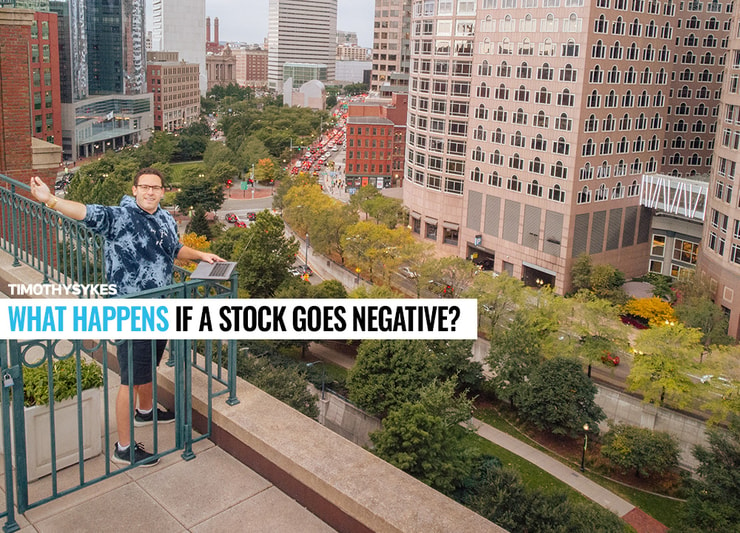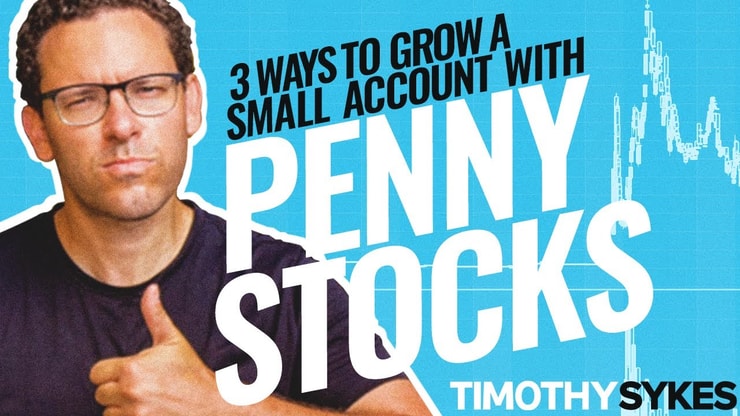Ever wondered, “What happens if a stock goes negative?” You’re not alone.
As a trader, you may find yourself in a situation where the stock price takes a nosedive, heading towards zero. Now, does that mean you owe money if it goes negative? No, a stock price can’t go below zero. But what unfolds from this decline is a maze of factors, complexities, and risks.
In the world of investment, there are a ton of ways you can lose, and lose big. You’ll want to be armed with the right information, tools, and strategies. Let’s get into the truth about negative stock prices — and what investment options might cause real-money losses.
Understanding the negative terrain of stocks requires a robust look at market dynamics, risk management, company valuation, and how to protect your investment. This article will give you the insight, content, and tools to guide your way through the crisis-laden world of stock trading.
Table of Contents
- 1 Can Stocks Go Negative?
- 2 What Stocks Have a High Chance of Becoming Worthless
- 3 How Does a Stock’s Value Get to Zero?
- 4 What Happens When a Company Goes Bankrupt?
- 5 How to Value a Stock
- 6 Situations Where You Can Lose More Than You Invested
- 7 Effective Strategies to Protect Your Investment
- 8 Frequently Asked Questions
- 8.1 Can You Lose All Your Money in Stocks?
- 8.2 What is a Good P/E Ratio for a Stock?
- 8.3 What Happens If I Buy a Stock and It Goes Down?
- 8.4 Can a Stock Be Delisted?
- 8.5 What Are the Services Provided by Brokers in Executing Trades?
- 8.6 How Do Leverage, Margin Accounts, and Loans Affect Trading Funds?
- 8.7 What Are Typical Policies and Compensation Models for Brokers?
- 8.8 How Can People Get Answers About Interest and Trading Examples?
Can Stocks Go Negative?
It’s a myth that stock prices can go negative. A share price might plummet, even to the brink of zero, but it can’t fall into the negative territory. The stock market operates on supply and demand. If there’s no demand for a stock, its price can fall to zero, but it stops there.
However, the decline to zero of a company’s stock price signals a crisis within the company, often leading to bankruptcy. Financial factors, market conditions, and business economy may contribute to this decline, but investors’ losses are capped at the amount they’ve invested in the stock.
What Stocks Have a High Chance of Becoming Worthless
Certain stocks are more prone to becoming worthless. Understanding which ones can prevent unnecessary loss.
Understanding the terminology and metrics used in stock trading is crucial for identifying potential risks and rewards. One term that often comes up is “outperform.” This refers to a stock or investment that is expected to achieve returns greater than a particular benchmark or market average. Recognizing stocks that are predicted to outperform can help investors steer clear of those that might become worthless. For a detailed comparison and understanding of what “outperform” means in stocks, check out this comprehensive guide.
Penny Stocks
Penny stocks are notoriously risky. Trading at incredibly low prices, they’re often subject to manipulation and lack liquidity. In some cases, they might be a fraudulent scheme. For traders, the appeal is the potential for high profits, but the risk of losing your entire investment is very real.
I trade penny stocks because they’re risky. If you know how to capitalize on their volatility while limiting their downsides, penny stocks can become a valuable part of your trading strategy.
Options
Options provide the right to buy or sell a security at a specific price within a given time frame. They can be complex and require a certain level of expertise. Trading options can be highly profitable but also carry a risk of complete loss, especially if market conditions shift unfavorably.
More Breaking News
- Iren’s Rapid Stock Climb: Buying Time?
- Ford’s Sales Surge: What’s Next?
- Olo Stock Soars as Red Lobster Relaunches Partnership
Futures
Futures contracts agree to buy or sell an asset at a future date for a specific price. Investors can lose significant money in futures if they misjudge market direction, price, or timing. Unlike stocks, you can lose more than your initial investment with futures if you don’t properly manage your position.
How Does a Stock’s Value Get to Zero?
A stock’s value might crash to zero due to several factors: poor management, heavy debt, legal issues, or a dramatic change in market demand. Even established companies can face such decline.
Understanding market trends, financial statements, and economic indicators can prevent being caught in this crash. The goal is not just to sell before a decline but to avoid investing in a company that’s on a negative trajectory in the first place.
When a stock’s value hits zero, investors lose their entire investment in that stock. It’s a harsh reality in the world of investing, but one that underscores the importance of diversification and careful stock selection.
What Happens When a Company Goes Bankrupt?
When a company goes bankrupt, its stock usually becomes worthless. Creditors, including bondholders, get compensated first. Stockholders are last in line and often receive nothing.
In cases of bankruptcy, a company’s assets are liquidated to pay off debt, and remaining shareholders often lose their entire investment. Understanding the signs of a company facing bankruptcy, and the difference between various bankruptcy chapters, can help you steer clear of a sinking ship.
How to Value a Stock
Valuation is the backbone of smart investing. Here’s how to evaluate stocks before putting your money at risk.
Valuing a stock involves understanding not only its potential for profit but also the risks associated with investment. A common concern among investors is whether they can owe money in stocks. While typical stock investments limit losses to the amount invested, certain trading strategies, like margin trading or short selling, can lead to debts beyond the initial investment. It’s essential to recognize these scenarios and approach them with caution. It’s all in this informative article.
Price-To-Book (P/B) Ratio
The P/B Ratio compares a stock’s market value to its book value. It gives an insight into what you’re paying for a company’s assets. A lower P/B might indicate an undervalued stock, but it’s essential to compare it with other companies in the same industry.
Price-To-Earnings (P/E) Ratio
The P/E Ratio tells you how much you’re paying for a dollar of a company’s earnings. It helps assess whether a stock’s price is high or low relative to its earnings. Analyzing a stock’s P/E Ratio in conjunction with other factors can guide better investment decisions.
Price-to-Earnings Growth (PEG) Ratio
The PEG Ratio considers the company’s growth rate, providing a more complete picture than the P/E Ratio alone. It’s particularly useful for comparing stocks of different growth rates.
Dividend Yield
Dividend Yield measures the annual dividend income an investor can expect to receive relative to the price of the stock. It can be a critical factor for income-focused investors.
Situations Where You Can Lose More Than You Invested
Investing in stocks carries risks, but there are specific situations where you can lose more than you put in.
When You are Trading on Margin
Margin trading allows you to borrow money to invest more than you have. While it magnifies profits, it also amplifies losses. In a declining market, losses can exceed the initial investment, leading to a margin call and possibly forcing a sell at a loss.
When You are Going Short
Short selling involves selling borrowed stocks, hoping to buy them back later at a lower price. If the stock price rises instead, losses can be unlimited as you’ll have to buy the shares at a higher price.
Effective Strategies to Protect Your Investment
Investment protection isn’t about playing it safe; it’s about managing risk effectively.
Investment protection involves a combination of strategies, including the use of tools like a stock average calculator. This tool helps investors calculate the average cost of their stock holdings, considering multiple purchases at different prices. Understanding your average cost is vital for making informed decisions about when to sell or hold, and it plays a key role in managing risk. If you’re looking to enhance your investment strategy with this valuable tool, you can find a detailed stock average calculator guide here.
The Use of Stop Losses in Trading
Stop losses can be set to sell a stock automatically if it reaches a certain price, protecting from further losses. It’s a simple, effective tool to limit loss.
Leveraging Put Options for Protection
Put options can be used to hedge against potential declines. Like an insurance policy for your portfolio, it adds a layer of protection.
The Role of Stock Diversification in Risk Management
Diversification across various sectors and asset classes can reduce the risk of significant loss. It’s not about winning big on a single stock but spreading the risk.
Diversifying into Non-Correlating Assets for Portfolio Balance
Investing in non-correlating assets can provide a buffer against market volatility. It helps in maintaining portfolio balance, reducing the overall risk.
Trading isn’t rocket science. It’s a skill you build and work on like any other. Trading has changed my life, and I think this way of life should be open to more people…
I’ve built my Trading Challenge to pass on the things I had to learn for myself. It’s the kind of community that I wish I had when I was starting out.
We don’t accept everyone. If you’re up for the challenge — I want to hear from you.
Apply to the Trading Challenge here.
Trading is a battlefield. The more knowledge you have, the better prepared you’ll be.
How do you protect your investment? Let me know in the comments — I love hearing from my readers!
Frequently Asked Questions
Navigating the investing world can lead to many questions. Here’s some straight talk on common queries.
Can You Lose All Your Money in Stocks?
Yes, you can lose all your money if the company you invest in goes bankrupt or the stock declines to zero. Knowing the company, the market, and implementing risk management strategies can help mitigate this risk.
What is a Good P/E Ratio for a Stock?
A good P/E Ratio varies by industry and market conditions. Comparing the P/E Ratio of a stock to its competitors and the industry average can give you a sense of whether it’s over or undervalued.
What Happens If I Buy a Stock and It Goes Down?
If you buy a stock and it goes down, you have an unrealized loss. You don’t actually lose money until you sell the stock. Analyzing market trends and the company’s performance can guide your decision to hold or sell.
Can a Stock Be Delisted?
Yes, stocks can be delisted from stock exchanges for various reasons like failing to meet the exchange’s standards. Delisting often leads to a sharp decline in share price, and trading may continue on OTC markets, often with less liquidity and transparency.
What Are the Services Provided by Brokers in Executing Trades?
Brokers offer services to manage and execute trades on behalf of their clients. They facilitate the buying and selling of securities through an account specifically set up for trading. Orders are placed following the client’s instructions, and brokers may provide examples of different trading strategies to assist clients.
How Do Leverage, Margin Accounts, and Loans Affect Trading Funds?
Leverage allows traders to control larger positions with a smaller amount of funds by using a loan from the broker. A margin account is a specific type of account that permits leverage, enabling traders to borrow money to invest in securities. This can amplify gains but also carries the risk of magnified losses.
What Are Typical Policies and Compensation Models for Brokers?
Brokers operate under specific policies that govern their actions, responsibilities, and compensation. These policies might include guidelines for handling client accounts, executing trades, and providing services such as investment advice. Compensation models may vary, and brokers often provide examples to illustrate how they charge for their services.
How Can People Get Answers About Interest and Trading Examples?
People interested in trading can consult brokers to get answers about various aspects of investing, such as interest rates on margin accounts or specific examples of trading strategies. Brokers often provide educational services to guide clients through different investment options and help them understand the potential risks and rewards.










Leave a reply